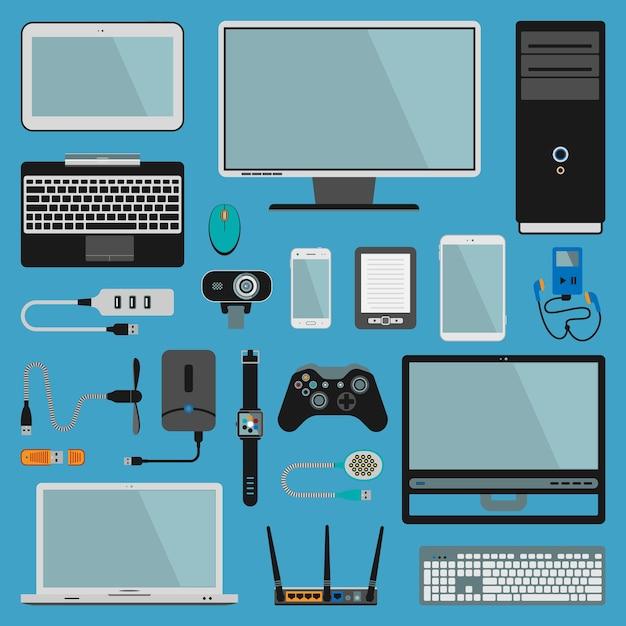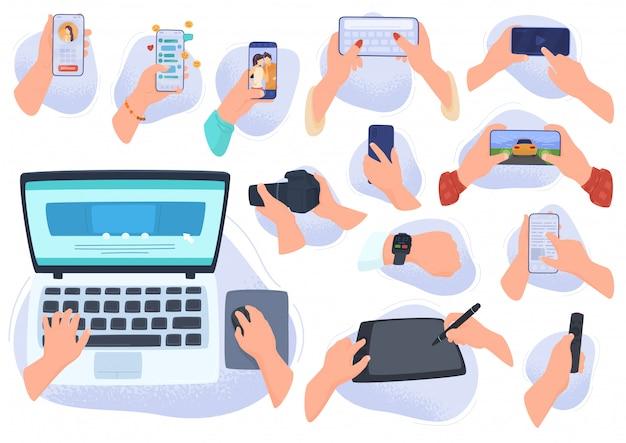In this fast-paced digital era, electronic devices have become an integral part of our lives, impacting virtually every aspect of our daily routines. With the rapid advancements in technology, education has also embraced this digital revolution, incorporating electronic devices into learning environments. While there are numerous advantages to using electronic devices in education, it is essential to recognize the potential disadvantages they may bring.
In this blog post, we will delve into the flip side of using electronic devices in learning. We will explore the negative effects they can have on students’ academic progress and overall well-being. Furthermore, we will address the concerns regarding technology overpowering our lives and reflect upon whether students should rely heavily on electronic devices in schools. So, let’s uncover the drawbacks and intricate challenges associated with the extensive use of electronic devices in education.

What are the Downsides of Incorporating Electronic Devices for Learning?
In today’s technology-driven world, electronic devices have become an integral part of our lives, including education. While these gadgets offer various advantages in the learning process, it’s essential to acknowledge the disadvantages they bring along. In this section, we will explore some of the downsides of using electronic devices for learning and how they can impact both students and educators.
Increased Distractions and Lack of Focus
One of the significant drawbacks of using electronic devices in learning is the potential for increased distractions. With the vast array of apps, social media platforms, and entertaining content available at their fingertips, students can easily get sidetracked from their educational tasks. It’s not uncommon to find learners scrolling through their social media feeds or succumbing to the allure of endless YouTube videos instead of focusing on their studies.
Negative Health Effects
Spending excessive time on electronic devices can lead to a range of health issues. Sitting for extended periods in front of a screen can result in poor posture, back and neck pain, and even eye strain. Moreover, research suggests that the blue light emitted by electronic screens can disrupt sleep patterns, making it harder for students to get a good night’s rest. As a result, their overall well-being and academic performance may suffer.
Potential for Cheating and Plagiarism
The use of electronic devices in the classroom also opens up avenues for cheating and plagiarism. With just a few simple keystrokes, students can access online resources and copy and paste information without fully understanding the subject matter. This undermines the purpose of education and hampers the development of critical thinking and problem-solving skills. It’s crucial for educators to implement strict guidelines and monitoring measures to mitigate these issues.
Limited Social Interaction and Communication Skills
While electronic devices offer connectivity, they can hinder in-person social interaction and the development of vital communication skills. Students may become overly reliant on online messaging or social media platforms, reducing face-to-face interactions. This lack of direct human contact can have long-term consequences, affecting students’ ability to engage in meaningful conversations, build relationships, and collaborate effectively with their peers.
Accessibility and Equity Concerns
Incorporating electronic devices into the learning environment may create accessibility and equity concerns. Not all students have access to the same technology or reliable internet connections outside of school. This discrepancy in resources can create a digital divide, leaving some students at a disadvantage. Additionally, relying too heavily on electronic devices for learning may overlook the need for hands-on, experiential learning that requires physical materials and resources.
While electronic devices undoubtedly offer numerous advantages in the realm of education, it’s crucial to acknowledge and address their drawbacks. Increased distractions, negative health effects, potential for cheating, limited social interaction, and accessibility concerns are some of the significant downsides of incorporating electronic devices for learning. By being aware of these disadvantages and implementing strategies to mitigate them, we can ensure a more balanced and effective learning experience for all students.

FAQ: Disadvantages of Using Electronic Devices in Learning
What are the negative effects of using computers
Using computers can have some drawbacks. Here are a few of the downsides:
Eye Strain and Posture Problems
Staring at a computer screen for extended periods can strain your eyes and lead to discomfort or even headaches. Plus, if you’re not conscious of your posture while using a computer, you might end up with aches and pains in your neck or back. So, remember to sit up straight and give your eyes some rest!
Distraction Nation
Let’s face it – computers can be quite the distraction machines! With just a few clicks, you can find yourself down a rabbit hole of YouTube videos or lost in the endless abyss of social media. It’s easy to lose track of time and forget the purpose of using a computer in the first place. Stay focused, my friend!
What are the disadvantages of using electronic devices in learning
Electronic devices are not all sunshine and rainbows when it comes to learning. Here are a couple of their downsides:
Lack of Human Interaction
One drawback of using electronic devices for learning is the potential lack of human interaction. Learning is not just about the transfer of information; it’s also about building connections, collaborating, and bouncing ideas off one another. Staring at a screen all day may limit opportunities for this vital social interaction.
Potential for Distraction and Procrastination
Sure, electronic devices can provide a wealth of information at our fingertips, but they can also be a gateway to endless distractions. These devices often offer tempting notifications, apps, and games that can easily derail your study plans. If you’re not careful, you might find yourself spending hours scrolling through social media or binge-watching cat videos instead of actually learning.
Is technology controlling our lives
While technology can be incredibly useful, there is a growing concern about its influence on our lives. Here are a couple of points to consider:
Dependency Dilemma
In today’s world, we heavily rely on technology to perform simple tasks and provide answers. From simple calculations to finding our way around, it’s normal for technology to be involved. However, when we become overly dependent on technology, it can hinder our ability to think critically and problem solve on our own.
Digital Overload
With the constant barrage of information and notifications, it’s easy to become overwhelmed and feel like technology is controlling our lives. We’re bombarded with an endless stream of emails, social media updates, and news alerts. It’s important to set boundaries and take breaks from the digital world to ensure a healthy and balanced lifestyle.
Why should students use electronic devices in school
While there may be disadvantages, electronic devices can also offer benefits for students in school. Here are a couple of reasons why they should be considered:
Access to a Wealth of Information
With electronic devices, students have access to a vast amount of information right at their fingertips. Gone are the days of long library visits for research papers. With a quick search, students can find information on practically any topic, expanding their knowledge and enhancing their learning experience.
Engaging Learning Experience
Using electronic devices in the classroom can make learning more interactive and engaging. Various educational apps, interactive multimedia, and online discussion forums allow students to explore and learn in exciting new ways. When used effectively, electronic devices can enhance student engagement and promote a deeper understanding of the subject matter.
How is technology being used
Technology has significantly impacted various aspects of our lives. Here are a couple of ways it is being utilized:
Revolutionizing Healthcare
Technology has revolutionized the field of healthcare. Medical professionals now use advanced tools and devices to improve diagnostics, enhance treatments, and save lives. From robotic surgeries to wearable health trackers, technology is changing the way we approach healthcare and improving patient outcomes.
Transforming Communication
Technology has transformed the way we communicate. With smartphones, social media, and video conferencing tools, we can connect with people from all corners of the globe in an instant. It has brought us closer together and made the world a smaller place. So, whether you’re sharing cat pictures or discussing ideas with colleagues, technology has made communication faster and more accessible.
And there you have it! Hopefully, this FAQ-style subsection has shed some light on the disadvantages of using electronic devices in learning. Remember, moderation is key when it comes to utilizing technology for education. Stay focused, take breaks, and always remember the importance of good old-fashioned human interaction. Happy learning, and embrace the technological world with caution!
